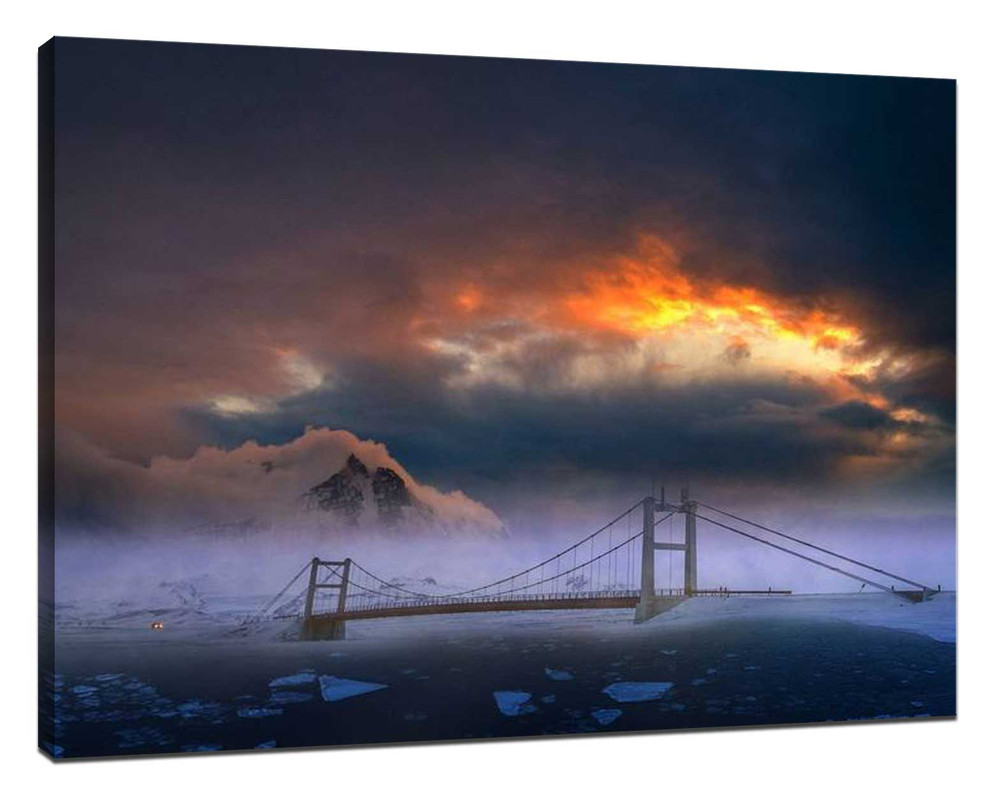Basic Knowledge of Post-Processing: A Guide for Better Photos and Prints
In today’s digital age, photography does not end with pressing the shutter button. Whether you are an amateur or a professional, post-processing plays a critical role in transforming a good photo into a great one. From adjusting colors to removing distractions, editing gives you control over the final look of your image. Post-processing also ensures your photos are print-ready, particularly if you plan to create high-quality wall art such as canvas prints. In this blog, we’ll explore the basics of post-processing, its importance, and key techniques that can help elevate your photography.
Why Post-Processing Matters
Many photographers wonder whether post-processing is really necessary if they already have a good camera. The reality is that even the best camera cannot fully capture what your eyes see. Light, shadows, and colors often appear differently on digital sensors compared to real life. Post-processing allows you to:
-
Correct imperfections caused by lighting or camera settings.
-
Highlight your creative vision through style and tone.
-
Prepare images for professional use, such as portfolios, marketing, or printing.
-
Enhance details and improve overall sharpness for high-resolution outputs.
Ultimately, editing ensures your photo communicates the emotion and message you intended when you captured the moment.
Essential Steps in Post-Processing
While advanced techniques exist, mastering the basics is crucial. Below are the foundational steps of post-processing:
1. Cropping and Straightening
Cropping removes unwanted elements and focuses the viewer’s attention on the subject. Straightening corrects tilted horizons or lines, especially important in landscape or architectural photography. These small adjustments can dramatically improve composition.
2. Exposure and Contrast Adjustments
Sometimes, photos come out too dark or too bright. Exposure adjustment balances the light across the image, while contrast creates separation between highlights and shadows, adding depth and drama.
3. Color Correction and White Balance
Colors influence how a photo feels. White balance corrects unnatural color casts, ensuring whites look neutral. Adjusting saturation and vibrance can make colors pop without appearing artificial. Proper color correction is particularly important when preparing photos for printing, as incorrect tones may appear even more noticeable on a large format.
4. Sharpening and Noise Reduction
Digital photos sometimes appear slightly soft. Sharpening enhances details, while noise reduction minimizes graininess, especially in low-light shots. Achieving the right balance ensures a crisp but natural image.
5. Retouching and Spot Removal
Dust spots, blemishes, or distracting elements can be distracting. Using retouching tools, you can remove imperfections while keeping the photo natural and clean.
Choosing the Right Software
There are many editing tools available, each catering to different levels of expertise:
-
Adobe Lightroom: Ideal for photographers, offering powerful editing tools with a focus on workflow and batch processing.
-
Adobe Photoshop: Best for advanced editing, such as composites or heavy retouching.
-
Capture One: Preferred by professionals for its color grading capabilities.
-
Free Alternatives: Software like GIMP or online editors like Canva provide accessible options for beginners.
The choice depends on your editing needs and comfort level.
Post-Processing for Printing
Editing for digital display (like social media) differs from preparing images for print. A photo may look great on a screen but appear dull or distorted when printed. To ensure professional-quality results:
-
Calibrate Your Monitor: Colors should display accurately to match the final print.
-
Check Resolution: Ensure your photo has enough pixels (usually 300 DPI for prints).
-
Soft Proofing: Some software lets you preview how your image will look when printed.
-
Color Profiles: Export your file in the right color space (usually sRGB or AdobeRGB).
This is particularly important when producing canvas prints, as the texture and size of the canvas can amplify both strengths and flaws in your photo. Post-processing ensures every detail is optimized for a striking final product.
Common Mistakes to Avoid
Even with good intentions, beginners often make these mistakes:
-
Over-editing: Too much saturation, sharpening, or contrast can make photos look unnatural.
-
Ignoring White Balance: Wrong colors can ruin the mood of a photo.
-
Not Saving Originals: Always keep the raw file safe so you can start fresh if needed.
-
Editing on an Uncalibrated Screen: If your monitor shows inaccurate colors, your prints will not match your expectations.
The Role of Creativity in Post-Processing
Post-processing is not just about correction—it’s also a tool for creativity. By experimenting with tones, black-and-white conversions, or color grading, you can give your photos a unique style. This personal touch helps your work stand out, whether it’s for a portfolio, business use, or home decoration.
Final Thoughts
Post-processing is an essential part of modern photography. It bridges the gap between what the camera captures and what you want your audience to see. By mastering basic techniques—cropping, exposure adjustment, color correction, sharpening, and retouching—you can bring out the best in your photos.
Whether you’re showcasing your work online or preparing it for professional printing, editing ensures your photos leave a lasting impression. And when it comes to creating personalized décor such as canvas prints, post-processing guarantees that every detail of your captured memory is preserved in the highest quality.
Recent Posts
-
Five Reasons Large Canvas Prints Are the Ideal Wall Decor for Your Living Room
Creating a warm, stylish, and inviting living room is a goal shared by many homeowners, and choosing …21st Nov 2025 -
Best Christmas Gifts 2025: Thoughtful Photo Gifts That Make Memories Last
Choosing the perfect Christmas gift in 2025 is all about meaning, practicality, and emotional connec …19th Nov 2025 -
How to Get Custom-Looking Canvas Prints at the Cheapest Prices in Australia
When it comes to decorating your home or office with beautiful artwork, canvas prints are a popular …13th Nov 2025
